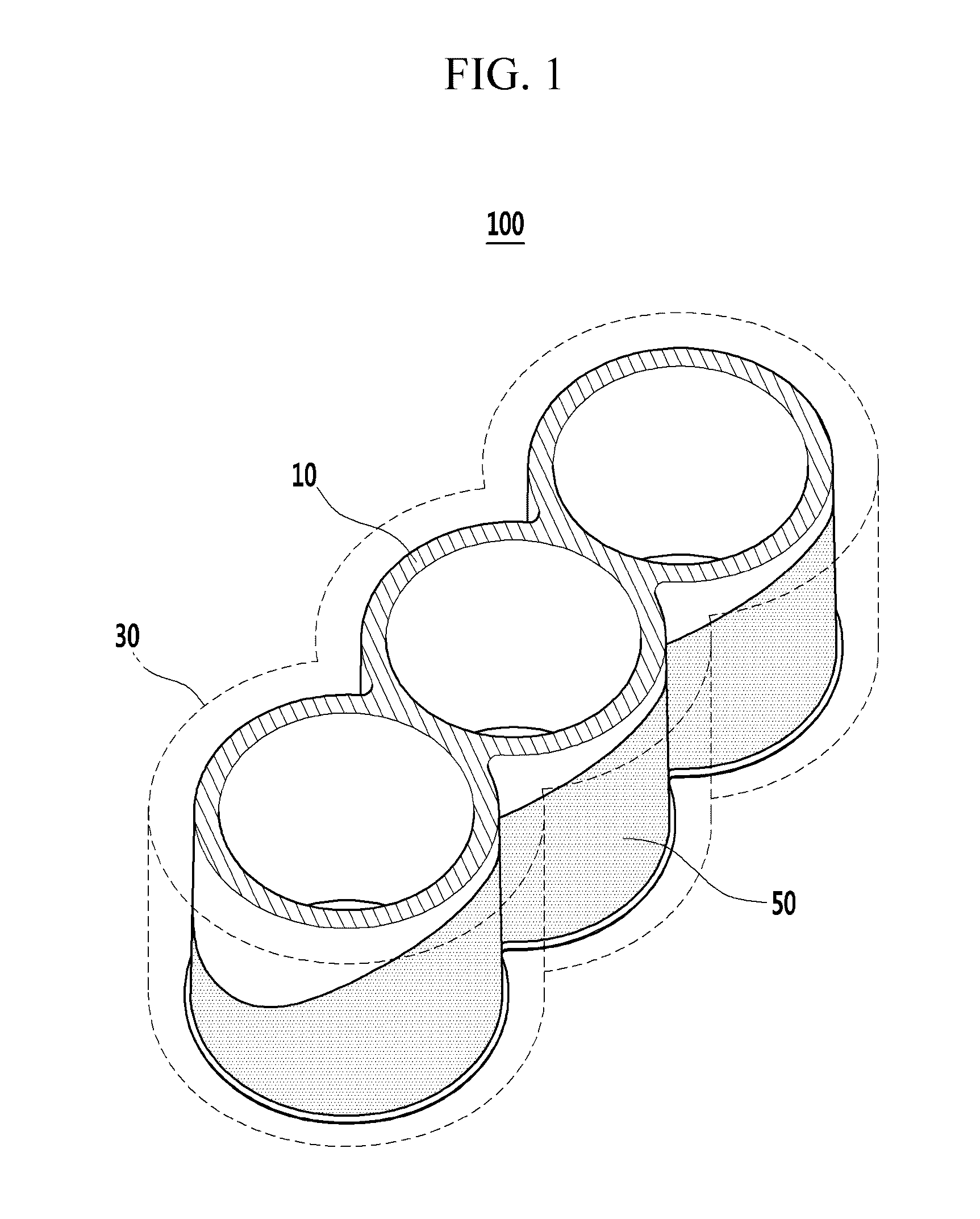Cylinder block for engine of vehicle
a technology of cylinder block and engine, which is applied in the direction of cylinders, machines/engines, mechanical apparatus, etc., can solve the problems of suitable replacement materials or structures, and consume 60% or greater of the total heat energy, and achieve low volume heat capacity, high mechanical properties and heat resistance, and low thermal conductivity
- Summary
- Abstract
- Description
- Claims
- Application Information
AI Technical Summary
Benefits of technology
Problems solved by technology
Method used
Image
Examples
exemplary embodiments 1 to 3
[0106]1 Manufacture of Insulation Coating Composition
[0107]A porous silica aerogel (having a specific surface area of about 500 cm3 / g) dispersed in ethyl alcohol and a polyamideimide resin (product of Solvay Corporation, having a weight average molecular weight of about 11,000) dispersed in xylene are injected into a 20 g reaction device, silica beads of about 440 g are added, and ball milling is performed at a room temperature and normal pressure condition at a speed of about 150 to 300 rpm such that an insulation coating composition (coating solution) is manufactured.
[0108]In this case, a weight ratio of the porous silica aerogel to the polyamideimide resin is listed in the following Table 1.
[0109]2 Formation of Insulation Coating Layer
[0110]The obtained insulation coating composition is coated on a component for a vehicle engine in a spray coating scheme. After the insulation coating composition is coated on the component and is primarily semi-dried at a temperature of about 150°...
experiment examples
1. Experiment Example 1
Measurement of Thermal Conductivity
[0117]Thermal conductivity of the coating layer of the component obtained from the exemplary embodiment and the comparative example is measured by a thermal diffusion method using a laser flash method in a room temperature and normal pressure condition according to standard ASTM E1461.
experimental example 2
2. Experimental Example 2
Measurement of Heat Capacity
[0118]Specific heat of a coating layer on the component obtained from the exemplary embodiment and the comparative example is measured by using sapphire as a reference using a DSC device at a room temperature condition according to standard ASTM E1269, and heat capacity is confirmed.
TABLE 1AerogelcontentThermalHeat(weight parts)Coatingconductivitycapacity ofbased on PAIlayerofcoatingresin 100thicknesscoating layerlayerweight parts(μm)[W / mK][KJ / m3 K]Exemplary151200.541216Embodiment 1Exemplary202000.3311240Embodiment 2Exemplary402000.294873Embodiment 3Comparative—2000.561221Example 1Comparative—2000.4121255Example 2
[0119]As listed in the Table 1, it is confirmed that the insulation coating layer obtained from the exemplary embodiment 1 to 3 has heat capacity of about 1240 KJ / m3 K or less and a thermal conductivity of about 0.54 W / mK or less in a thickness of the range of about 120 to 200 μm.
[0120]Further, as illustrated in FIG. 2, i...
PUM
 Login to View More
Login to View More Abstract
Description
Claims
Application Information
 Login to View More
Login to View More - R&D
- Intellectual Property
- Life Sciences
- Materials
- Tech Scout
- Unparalleled Data Quality
- Higher Quality Content
- 60% Fewer Hallucinations
Browse by: Latest US Patents, China's latest patents, Technical Efficacy Thesaurus, Application Domain, Technology Topic, Popular Technical Reports.
© 2025 PatSnap. All rights reserved.Legal|Privacy policy|Modern Slavery Act Transparency Statement|Sitemap|About US| Contact US: help@patsnap.com



